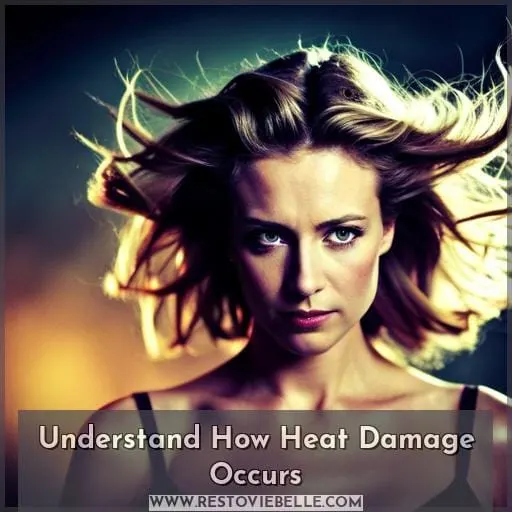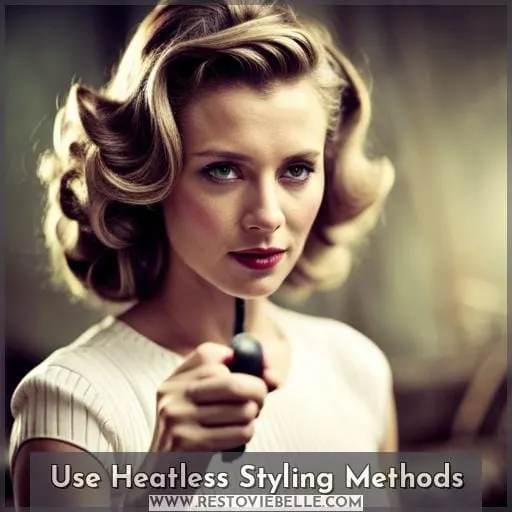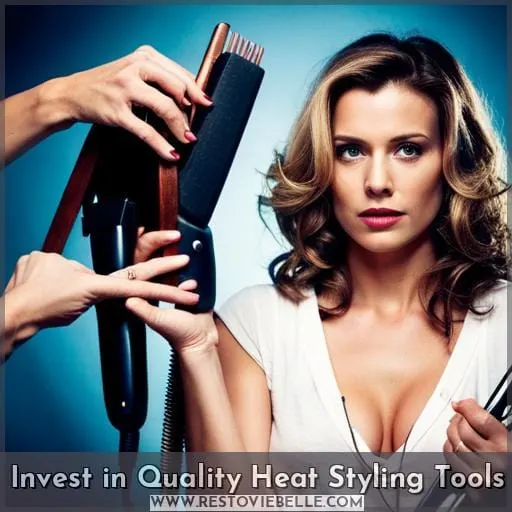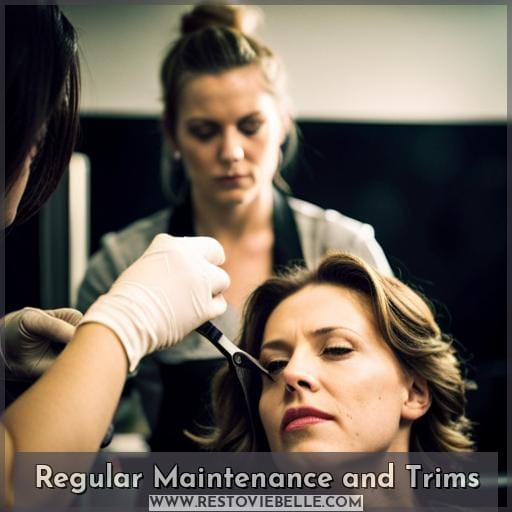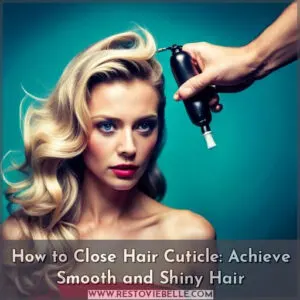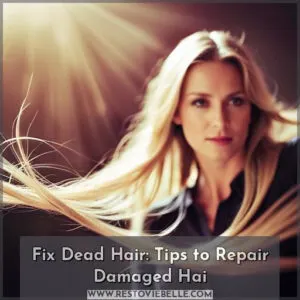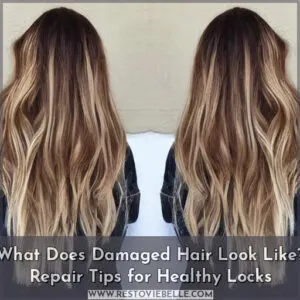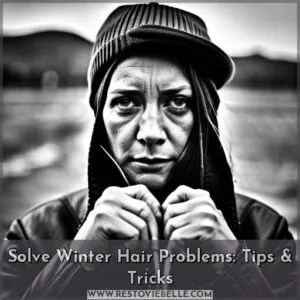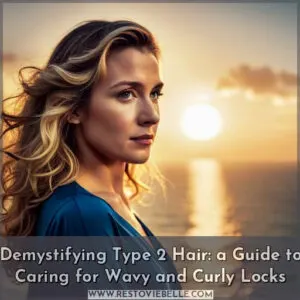This site is supported by our readers. We may earn a commission, at no cost to you, if you purchase through links.
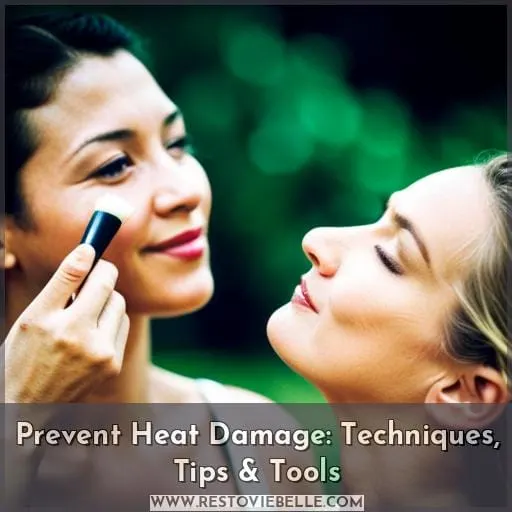 Imagine this: you’re getting ready to style your hair with heat, but you’re worried about the damage it can cause. Don’t fret! In this article, we’ll show you how to prevent heat damage using techniques, tips, and tools that are easy to implement.
Imagine this: you’re getting ready to style your hair with heat, but you’re worried about the damage it can cause. Don’t fret! In this article, we’ll show you how to prevent heat damage using techniques, tips, and tools that are easy to implement.
Whether you have long or short hair, curly or straight locks, these practical and knowledgeable strategies will help keep your hair healthy while still achieving the desired look.
Say goodbye to heat damage and hello to beautiful strands!
Table Of Contents
- Key Takeaways
- Start Off on the Right Foot
- Understand How Heat Damage Occurs
- Use Heatless Styling Methods
- Invest in Quality Heat Styling Tools
- Proper Hair Care Routine for Heat-Damaged Hair
- Avoid Excessive Heat Exposure
- Regular Maintenance and Trims
- Frequently Asked Questions (FAQs)
- Can heat damage occur even if I use a heat protectant spray?
- Is it possible to repair heat-damaged hair without cutting it off?
- How often should I deep condition my hair to prevent heat damage?
- What are some signs that my hair is experiencing heat damage?
- Are there any specific ingredients I should look for in a heat protectant spray to effectively prevent heat damage?
- Conclusion
Key Takeaways
- Use a high-quality shampoo and conditioner that are free of harsh ingredients.
- Apply a heat protectant before using hot tools.
- Limit the amount of time you use hot tools and turn down the heat setting.
- Opt for heatless styling methods and invest in quality heat styling tools with adjustable temperature settings.
Start Off on the Right Foot
To start off on the right foot and prevent heat damage to your hair, it’s important to follow proper heat styling techniques.
- Use a high-quality shampoo and conditioner that are free of harsh ingredients.
- Apply a heat protectant before using hot tools.
- Turn down the heat setting on your tools.
- Limit the amount of time you use them.
Additionally, getting regular trims will help remove split ends and keep your hair healthy.
Proper Heat Styling Techniques
Start off on the right foot by using a high-quality shampoo and conditioner that’s free of sulfates, parabens, and other ingredients that can strip your hair.
Before heat styling, always use a heat protectant to shield your hair from damage.
Remember to cool down your tools before using them on your hair.
Consider wrapping your hair in a silk scarf while sleeping and avoid hot water when washing it.
Use a diffuser attachment when blow drying for less heat exposure.
Regular Trims
To maintain healthy hair and prevent heat damage, it’s important to prioritize regular trims.
Here are three key benefits of getting a trim:
- Trimming helps remove split ends, preventing further damage and breakage.
- It promotes healthier hair growth by eliminating damaged strands.
- Regular trims keep your hairstyle looking fresh and polished.
Remember to consult a professional or learn how to trim at home using proper techniques for best results in preventing hair damage.
Understand How Heat Damage Occurs
To prevent heat damage, it’s important to understand how high heat affects your hair.
Excessive heat can cause the hair cuticles to lift, leading to dryness and frizz.
Signs of heat-damaged hair include dullness, brittleness with split ends, and loss of natural curls or texture.
By recognizing these effects and taking preventative measures such as using lower heat settings on styling tools and incorporating deep conditioning treatments into your routine, you can protect your hair from unnecessary damage.
Effects of High Heat on Hair
- Understand the damaging effects of high heat on your hair.
Effects of High Heat on Hair
| Damage | Texture | Color |
|---|---|---|
| Weakens hair protein bonds | Alters hair texture and structure | Fades and dulls color |
High heat can damage your hair in various ways. It weakens the protein bonds that give strength to your strands, leading to breakage and brittleness. Additionally, it alters the natural texture and structure of your hair, making it frizzy or limp.
Signs of Heat-Damaged Hair
One of the most noticeable signs that your hair has been damaged by heat is its dull and dry appearance.
Heat damage can cause your hair to lose its natural shine and moisture, leaving it looking lackluster.
In addition to being dull, heat-damaged hair may also feel brittle and prone to breakage.
You may notice frizz in your hair as well, as the excessive heat can disrupt the cuticle layer of your strands.
It’s important to recognize these signs so you can take steps to repair and prevent further damage from flat irons or curling irons.
Use Heatless Styling Methods
When it comes to preventing heat damage, using heatless styling methods can be a game-changer.
Air-drying your hair whenever possible allows it to naturally dry without exposing it to the damaging effects of hot tools.
Additionally, trying out curling techniques that don’t require heat or opting for protective styles at night can help minimize the risk of heat damage and keep your hair healthy and strong.
Air-Drying Techniques
Continue air-drying your hair to minimize heat damage and promote healthier, more resilient strands.
Try these techniques:
- Use a diffuser attachment on your hair dryer.
- Plop your hair with a silk pillowcase or towel.
- Detangle gently using a wide-tooth comb.
Heat-Free Curling Methods
To achieve heatless curls, start by using heat-free curling methods such as:
- Braiding
- Pin curls
- Sock buns
- Bantu knots
- Twist outs
These techniques allow you to create beautiful curls without the need for damaging heat styling tools.
Protective Styling at Night
To protect your hair from heat damage, incorporate protective styling techniques at night to avoid the need for heat styling tools.
This can include using:
- Satin pillowcases
- Silk scarves
- Braids
- Pineapple buns
as a way to keep your hair safe while you sleep.
Invest in Quality Heat Styling Tools
When it comes to preventing heat damage, investing in quality heat styling tools is essential.
Choosing the right heat setting on your tools can make a significant difference in protecting your hair from excessive heat exposure.
Look for tools that offer adjustable temperature settings and opt for lower temperatures whenever possible to minimize the risk of damage.
By investing in high-quality tools, you can ensure better control over the amount of heat applied to your hair and reduce the chances of causing long-term damage.
Choosing the Right Heat Setting
To ensure the health and integrity of your hair while heat styling, it’s essential to invest in quality heat styling tools that allow you to choose the right heat setting for your specific needs.
Using the wrong level of heat can cause serious damage to your hair, including dryness, brittleness, and split ends.
When selecting a tool, opt for one with adjustable temperature settings so you have control over how much heat is applied.
Additionally, always use a high-quality thermal protectant before using any hot tool on your hair. This will create a barrier between the intense heat and your strands, minimizing potential damage.
Taking these precautions will help keep your locks healthy and protected while achieving desired styles without sacrificing their well-being.
Proper Hair Care Routine for Heat-Damaged Hair
To properly care for heat-damaged hair, it’s important to incorporate certain products into your routine.
Start by using a clarifying shampoo for deep cleansing to remove any buildup and residue from styling products.
Follow up with a restorative shampoo and conditioner that will nourish and repair the damaged hair.
Finally, don’t forget to use a leave-in conditioner to provide added moisture and protection throughout the day.
Clarifying Shampoo for Deep Cleansing
Include a clarifying shampoo in your hair care routine to deeply cleanse and remove build-up from heat-damaged hair.
- Use clarifying shampoo once or twice a week.
- Adjust frequency based on the condition of your hair.
- Clarifying shampoo is especially beneficial for oily hair.
- For dry hair, use clarifying shampoo less often to avoid stripping natural oils.
Restorative Shampoo and Conditioner
To restore your heat-damaged hair, start with a restorative shampoo and conditioner that will nourish and repair your locks. Look for sulfate-free, silicone-free, paraben-free, cruelty-free, and organic products to ensure the best care for your damaged hair.
| Restorative Shampoo | Restorative Conditioner |
|---|---|
| Sulfate-Free | Sulfate-Free |
| Silicone-Free | Silicone-Free |
| Paraben-Free | Paraben-Free |
Leave-in Conditioner for Added Moisture
To properly care for heat-damaged hair, include a leave-in conditioner in your routine for added moisture.
Benefits of using a leave-in conditioner include:
- Improved hair health
- Increased hydration
- Protection against further damage
- Easy application
Avoid Excessive Heat Exposure
To avoid excessive heat exposure and prevent heat damage to your hair, it’s important to implement a few key techniques.
Firstly, limit the frequency of heat styling by opting for air-drying whenever possible.
Secondly, when using hot tools, make sure to use lower heat settings that are less damaging to your hair.
Lastly, always apply a heat protectant spray before using any hot tool on your hair to provide an additional layer of protection against high temperatures.
By following these practices, you can minimize the risk of excessive heat exposure and keep your hair healthy and beautiful.
Limiting Heat Styling Frequency
How can you minimize heat damage and avoid excessive heat exposure when styling your hair?
Limit the frequency of heat styling to 1-2 times per week.
Avoid using hot tools every day or every other day to protect your hair from unnecessary damage.
Using Lower Heat Settings
Adjust your heat tools to lower temperature settings to minimize the risk of heat damage.
- Use a heat protectant spray before applying any hot tool.
- Consider your hair type and texture when selecting the appropriate heat setting.
- Start with a lower temperature and gradually increase if necessary.
- Be mindful of how long you expose your hair to direct heat to prevent excessive damage.
Applying Heat Protectant Every Time
To protect your hair from heat damage, apply a heat protectant every time you use hot tools.
This step is crucial in preventing excessive heat exposure and minimizing the risks of dryness, breakage, and frizz.
Reapply the heat protectant as needed throughout your styling process for maximum benefits.
However, keep in mind that some heat protectants can weigh down the hair or leave residue if overused.
Strike a balance by following product instructions and finding one that suits your specific needs to ensure healthy and protected locks.
Regular Maintenance and Trims
To prevent heat damage, it’s important to regularly monitor the health of your hair.
Keep an eye out for signs of:
- Dryness
- Brittleness
- Split ends
If you notice any issues, consider seeking professional advice from a hairstylist who can provide personalized recommendations for maintaining healthy hair.
Additionally, don’t forget to trim your split ends as needed to prevent further damage and promote overall hair health.
Monitoring Hair Health
Regularly schedule appointments with your stylist for trims to maintain the health and vitality of your hair.
Look out for visual signs of damage, such as dullness or split ends.
Consider scalp sensitivity, hair texture, and porosity when determining maintenance needs.
Seeking Professional Advice
Schedule regular appointments with a professional stylist to ensure proper maintenance and trimming of your hair.
Finding the right stylist is crucial, so ask the right questions and trust your gut.
Prevention is always better than cure, and seeking multiple stylist opinions can help you make informed decisions.
Trimming Split Ends as Needed
Trim your split ends as needed to maintain the health and appearance of your hair.
When to trim depends on how fast your hair grows, but a good rule of thumb is every 6-8 weeks.
Trim with scissors or razors, removing only the damaged ends.
Frequently Asked Questions (FAQs)
Can heat damage occur even if I use a heat protectant spray?
Yes, heat damage can still occur even if you use a heat protectant spray.
While it helps minimize the damage, it doesn’t provide 100% protection.
It’s important to also use proper styling techniques and limit the amount of time you expose your hair to heat.
Is it possible to repair heat-damaged hair without cutting it off?
Yes, it’s possible to repair heat-damaged hair without cutting it off.
Start by using a restorative shampoo and conditioner designed for damaged hair.
Incorporate a leave-in conditioner and consider getting regular trims to remove split ends.
How often should I deep condition my hair to prevent heat damage?
To prevent heat damage, deep condition your hair at least once a week.
This will nourish and strengthen your strands, like giving them a refreshing drink of water to keep them healthy and resilient against the damaging effects of heat styling.
What are some signs that my hair is experiencing heat damage?
Signs of heat-damaged hair include:
- Dullness
- Dryness
- Brittleness with split ends
- Frizz
- Breakage
If your hair is naturally curly or textured, you may also notice:
- A loss of curls
Regular trims and nourishing products can help repair the damage.
Are there any specific ingredients I should look for in a heat protectant spray to effectively prevent heat damage?
To effectively prevent heat damage, look for a heat protectant spray with ingredients like argan oil and keratin.
These powerful ingredients create a protective barrier on your hair, shielding it from the damaging effects of high temperatures.
Conclusion
To prevent heat damage and maintain healthy hair, it’s essential to start off on the right foot with proper heat styling techniques and regular trims.
Understanding how heat damage occurs and recognizing the signs can also help in preventing further damage.
Additionally, incorporating heatless styling methods and investing in quality heat styling tools can minimize the risk of damage.
Following a proper hair care routine and avoiding excessive heat exposure are crucial steps in maintaining beautiful and healthy strands.
Don’t let heat damage hold you back from achieving your desired look – with these techniques, tips, and tools, you can protect your hair and say goodbye to damage.


